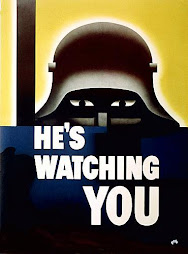Tuesday, July 13, 2010
Chipless Tagging - No More Need For Implanted Chips
"This is a giant leap for the company," said Mark C. Pydynowski, SOMARK President. "This demo proves our system's ability to function quickly and automatically. Previous tests, which confirmed the technology's feasibility, were slower and required some tasks to be performed manually."
For example, we can deposit our ink directly on a metal substrate or liquid-filled container and read a unique ID without line-of-sight. Metal compatibility is critical for livestock environments because of the metal laden infrastructure of such facilities.
SOMARK's system includes a disposable ink cartridge, a multi-needle applicator and a handheld reader. This technology combines features of several common technologies, including human tattoos (ink-based and inexpensive), chipless RFID (machine-readable and no-line-of-sight), biometrics (unique to the individual) and hot-iron brands (permanent and tamper-proof).
"Although potential applications include cattle, pigs, horses, sheep, dogs, cats, mice, rats and prime cuts of meat, our primary focus is cattle," said Ramos M. Mays, SOMARK inventor and CSO.
"SOMARK's technology is distinct because, unlike conventional RFID, it is not constrained by metal, liquid or organic matter," said Chris D. Justice, SOMARK VP of R&D who joined the company in 2007 after 10 years managing product development, including medical devices. "For example, we can deposit our ink directly on a metal substrate or liquid-filled container and read a unique ID without line-of-sight. Metal compatibility is critical for livestock environments because of the metal laden infrastructure of such facilities."
About SOMARK Innovations:
SOMARK's purpose is food safety. The technology company is developing a patented ID system based on a biocompatible ink tattoo with chipless RFID functionality. SOMARK is targeting the livestock industry to help identify and track cattle and thus mitigate export trade loss from BSE scares, also known as Mad Cow Disease. SOMARK is located at the Center for Emerging Technologies in St. Louis, Mo.
Saturday, April 3, 2010
Tuesday, March 23, 2010
Airport device follows fliers' phones

Today's smartphones and PDAs could have a new use in the nation's airports: helping passengers avoid long lines at security checkpoints.
The Transportation Security Administration is looking at installing devices in airports that home in and detect personal electronic equipment. The aim is to track how long people are stuck in security lines.
Information about wait times could then be posted on websites and in airports across the country.
"This technology will produce valuable data that can be used in a variety of ways," TSA spokeswoman Lauren Gaches said, noting it could help prevent checkpoint snarls.
But civil-liberties experts worry that such a system enables the government to track people's whereabouts. "It's serious business when the government begins to get near people's personal-communication devices," said American Civil Liberties Union privacy expert Jay Stanley.
The TSA is in the early phases of exploring the technology, which Purdue University researchers tested for a month last year at Indianapolis International Airport. Thumbnail-size receivers near checkpoints detected serial numbers emitted by some electronic devices being carried by passengers. The receivers recorded the time when a passenger entered a security line and the time when the same passenger cleared the checkpoint, Purdue transportation engineer Darcy Bullock said. Only part of each serial number was recorded, and the numbers were quickly deleted, he said.
Some electronic devices automatically broadcast, or "chirp," their serial number every 15-20 seconds when they are turned on. People can set their devices so they don't broadcast. Bullock found he could detect signals from 6% to 10% of Indianapolis passengers. "We sit there and listen, capturing the unique identifier," Bullock said.
Marc Rotenberg of the Electronic Privacy Information Center said Bullock's current system minimizes privacy risk by recording partial serial numbers. But he worries that could change.
Airports Council International security chief Christopher Bidwell said wait-time information would remove some uncertainty of air travel "especially if that information is real-time, up-to-date and accurate."
A few European airports have started using such systems, the TSA said. London's Heathrow Airport is working with airlines to start using the technology, airport spokeswoman Mary Kearney said.
The TSA used to post information on its website that listed average wait times during the previous month. Measurements were done with time-stamped cards that screeners handed passengers as they entered and cleared a checkpoint. The TSA stopped those measurements in 2008 to focus more on security.
Saturday, March 6, 2010
Police forces to be equipped with mobile fingerprint scanners
Security officers on patrol will be able to use the devices, which are about the size of a mobile phone, to check the fingerprints against national records.
Up to 3,000 devices will be distributed to each of the 43 forces across England and Wales after senior officers claimed they will save hours of police time and speed up inquiries.
The National Policing Improvement Agency has signed a three-year contract worth £9million with U.S. firm Cogent System to provide the devices.
Deputy Chief Constable Peter Goodman, of the Association of Chief Police Officers, said: 'This new technology will allow police to more easily confirm the identity of suspects on the street without having to arrest them and return to the police station to confirm who they are - as we currently have to do.
'It also means cost savings equivalent to releasing some 360 officers back to front-line policing each year.'
Chief Constable Peter Neyroud, from The National Policing Improvement Agency, added: 'Identification is crucial to police investigations and giving officers the ability to do this on the spot within minutes is giving them more time to spend working in their communities, helping to fight crime, bringing more offenders to justice and better protecting the public.'
The decision comes after a successful trials of 330 similar devices in 2006, which showed officers saved at least 30 minutes every time they used the machine.
However, some are concerned the new devices could encourage police to conduct random searches.
Campaign group Liberty said last year it had 'very real concerns' about the possibility of the introduction of such devices.
Thursday, February 11, 2010
Tuesday, February 2, 2010
Airport-security plan calls for 500 body scanners in '11
 Body scanners that look under airline passengers' clothing for hidden weapons could be in nearly half the nation's airport checkpoints by late 2011, according to an Obama administration plan announced Monday.
Body scanners that look under airline passengers' clothing for hidden weapons could be in nearly half the nation's airport checkpoints by late 2011, according to an Obama administration plan announced Monday. The $215 million proposal to acquire 500 scanners next year, combined with the 450 to be bought this year, marks the largest addition of airport-security equipment since immediately after the 9/11 attacks. There are only 40 body scanners in a total of 19 airports now.
"It's a move in the right direction," aviation-security consultant Douglas Laird said. "We need to scan all passengers."
The push for more scanners accelerated after the failed Christmas Day attempt to bomb an airliner near Detroit. Suspect Umar Farouk Abdulmutallab boarded Flight 253 in Amsterdam after walking through a metal detector with powder explosives hidden in his underwear, authorities say. Police allege he tried to trigger an explosion by igniting the powder, which caught fire but did not cause any serious damage before Abdulmutallab was subdued by the crew and passengers.
Privacy advocate Marc Rotenberg called the scanners "a deeply invasive intrusion" that would inconvenience millions of innocent travelers with screening that takes longer than metal detectors. "We'll have another Homeland Security Department program for the war on terror used almost exclusively on Americans," said Rotenberg, executive director of the Electronic Privacy Information Center.
Laird said the administration should emphasize installing body scanners in major European airports "because that's where the threats come out of." European countries such as the United Kingdom and the Netherlands are adding the scanners. Countries such as Germany and Italy are considering the technology, which creates black-and-white images of passengers under their clothing.
Senior House Appropriations Committee member Rep. Nita Lowey, D-N.Y., welcomes the plan for 500 new scanners. "The American people understand that this threat is real, and if we can provide equipment that will make their flights safer and prevent another attack, they will be supportive," Lowey said.
Among the other aviation-security upgrades the administration proposed in its 2011 budget:
• Increasing the number of airport officers who patrol terminals looking for suspicious passengers to 3,350 from 3,000.
• Increasing the number of bomb-sniffing dogs used at airports to 1,080 from 805.
• Adding an unspecified number of air marshals to international flights.














